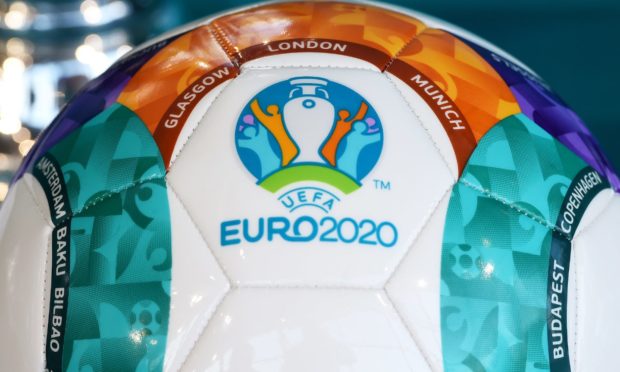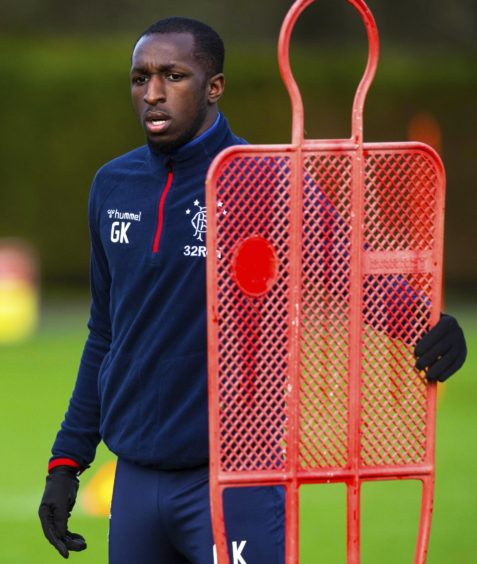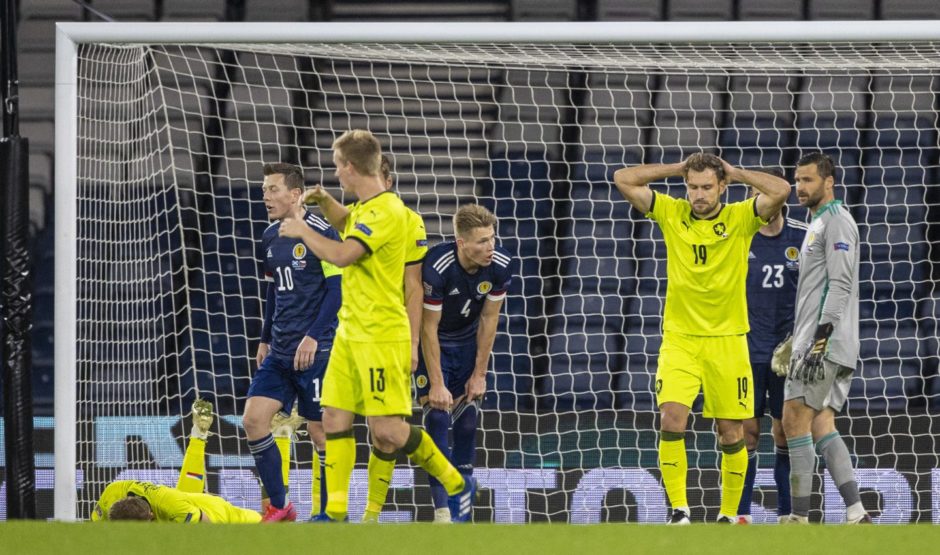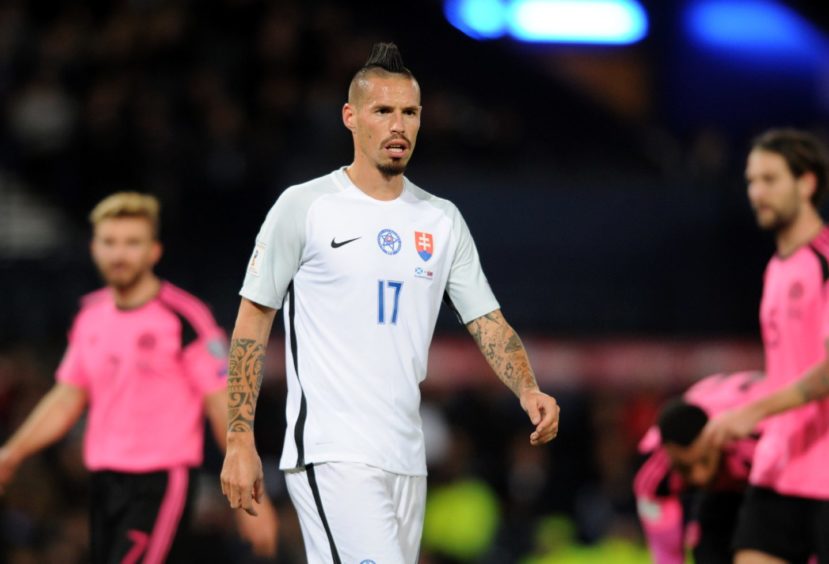Euro 2020 gets started tomorrow with in-form Italy taking on Turkey in Rome.
The Italians are seventh the FIFA world rankings right now and they will be looking to get off to the ideal start against their opponents, who are 29th.
At the other end of the scale, Scotland are 44th, which is the third lowest rated out of the 24 competitors.
Steve Clarke’s side will be seeking to make history by getting out of the group stages for the first time at a major competition.
Four of the best third-placed teams will progress into the last 16, which widens the opportunity for Scotland.
Beating the Czech Republic at Hampden on Monday would give us a real chance of going through if punishing results are avoided against England and Croatia.
Scotland will be viewed as minnows by most other entrants, but that won’t matter and plays into Clarke’s players’ hands in many ways as they go under the radar.
Here we look at the other so-called minnows. Could any of these six teams spring a surprise?
North Macedonia
This independent nation is only 27 years old, so reaching these finals is some achievement in itself. It is one of the successor states from Yugoslavia
You’d better take notice of their recent record, too. Latvia, Slovenia and our pals Israel all lost to the 62nd ranked team in the world and their sent out global shockwaves by beating Germany 2-1 in March in Duisburg.
Experienced striker Goran Pandev, aged 37, is their main threat and he got the goal in their play-off victory over Georgia to reach these finals. They saw off Kosovo in the semis too.
They are the 500/1 shots that no one fancies to go all the way. However, under manager Igor Angelovki, they will seek to limit their opponents and hit on the break through their main strikers Pandev and Aleks Trajkovski.
They are in Group C with the Netherlands, Ukraine and Austria.
Finland
The only other nation sitting lower than Scotland in the world rankings are the Finns (54th).
In line with that comes low expectations and being part of this competition is seen as success.
Top seeds Belgium, Denmark and Russia are their Group B opponents and their hopes of progressing will lie in trying to get a big result against the Danes in their opener on Saturday.
Their chances were given a massive lift this week when Norwich City striker, Teemu Pukki, their starman was declared fit after ankle ligament damage caused alarm for manager Markku Kanerva, a former teacher.
Rangers midfielder Glen Kamara forms part of a strong spine to their team, with Bayer Leverkusen goalkeeper Lukas Hradecky and central defenders Joona Toivio and Paulus Arajuuri sitting in between.
They share the 500/1 chances of winning the tournament with North Macedonia.
Czech Republic
The Czechs, Scotland’s first opponents, are only four spots above us in the rankings at 40.
Scotland beat them home and away last year, although Covid-19 left them a shadow squad in Olomouc.
Two years ago, they dished out England’s first defeat in a qualifier and the West Ham pairing of Vladimir Coufal and will be seeking to carry on their final club form.
You never know what you’re going to get from them. Wales beat them in a World Cup qualifier in March but they also held favourites Belgium to a 1-1 draw just three days before that.
Like Scotland, Monday’s game at Hampden will go a long way towards deciding whether they can make the cut for round two.
Russia
You might expect Russia to be ranked higher than 38th, but they are one of the least fancied countries, despite reaching the quarter-finals of the 2018 World Cup on home soil.
That squad remains largely as it was under manager Stanislav Cherchesov and former left-sided ex-Chelsea player Yuri Zhirkov is a key figure, at the age of 37.
You won’t miss captain and striker Artem Dzyuba. The 6ft 6ins Zenit St Petersburg hitman bagged 16 goals for the Russian champions last term.
Anything they take from the Belgians in their opener on Saturday will be a bonus, so their best hopes will come against Finland and Denmark.
Hungary
A famous name in world football due to past exploits but there is low expectations around the 37th seeds here in Group F with France, Portugal and Germany.
Like Scotland, they needed to come through via the Nations League route and finished fourth in the usual qualifying section behind Croatia, Wales and Slovakia.
Their Nations League play-off final went to the wire. They needed two goals in the last three minutes to beat their gutted opponents Iceland.
However, their form overall going into these finals is impressive.
Their last defeat was against Russia in the Europa League last September and they have not lost since and that’s a run of 11 fixtures.
Hungary are managed by Italian Marco Rossi and their goal hopes lie with RB Leipzig forward Dominik Szoboszlai, who is fit again after being hampered by injuries this year.
The only silver lining on the cloud is that their ties against Portugal next Tuesday and France four days later are in Budapest. They might need all the help they can get.
Slovakia
As the only other nation ranked higher than 30, the Slovaks (36th) will contest Group E alongside Spain, Sweden and Poland.
They knocked out Republic of Ireland and Northern Ireland on the way here, courtesy of a penalty shoot-out and extra-time respectively.
At the back, they have arguably one of Europe’s most capable young centre backs in Milan Skriniar, who was a vital component in Inter’s Serie A success last term.
Newcastle goalkeeper Martin Dubravka is their last line of defence.
Their midfield includes Stanislav Lobotka, whose £21.5 million move from Celta Viga to Napoli last year made him Slovakia’s most expensive player.
Up top, 33-year-old Marek Hamsik, of IFK Goteborg, remains a potent threat, with experienced forward Michal Duris, who plays for Greek side Omonia, also an attacking option.
Their form is dreadful and in fact only Scotland in the Nations League and Russia in a World Cup qualifier have lost to them over their last 13 matches.
That 1-0 win over Scotland last November ended Steve Clarke side’s nine-game unbeaten run but came just a few days our qualification in Serbia with eight changes made.
Victory over Poland will be seen as crucial if Slovakia are to have any hopes of repeating their feat of reaching the last 16 as they did five years ago.
- Overall FIFA world rankings at Euro 2020: Belgium (1), France (2), England (4), Portugal (5), Spain (6), Italy (7), Denmark (10), Germany (12), Switzerland (13), Croatia (14), Netherlands (16), Wales (17), Sweden (18), Poland (21), Austria (23), Ukraine (24), Turkey (29), Slovakia (36), Hungary (37), Russia (38), Czech Republic (40), SCOTLAND (44), Finland (54) and North Macedonia (62).



